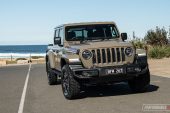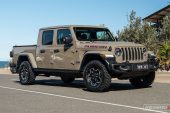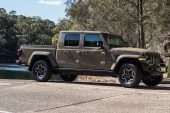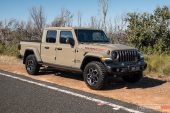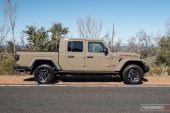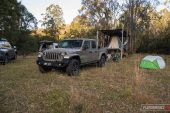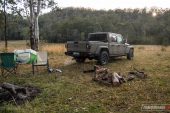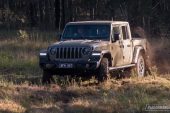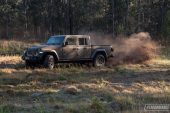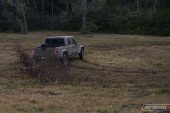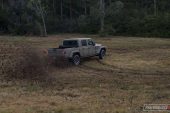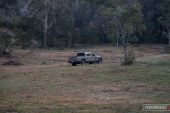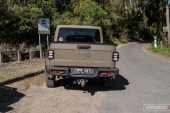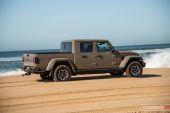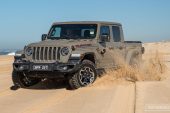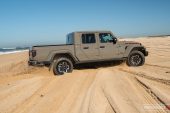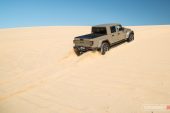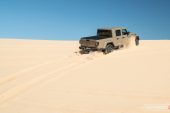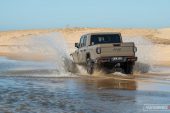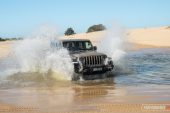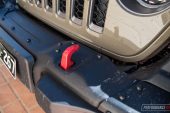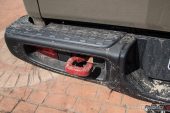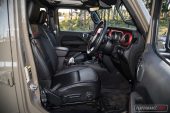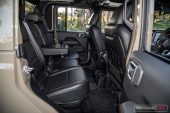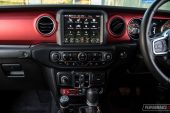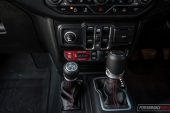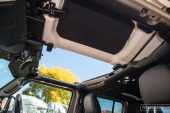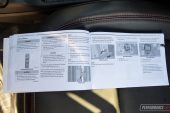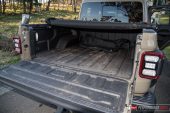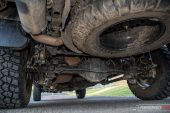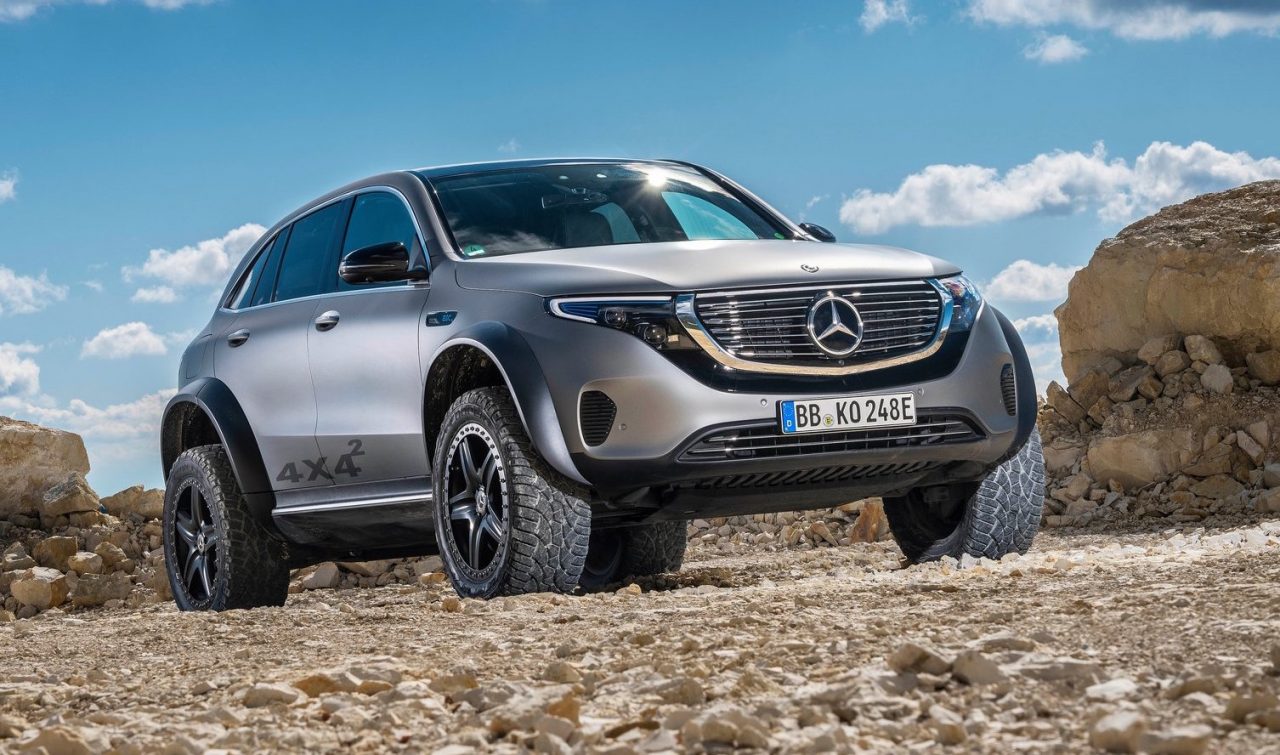You know what, it’s great to see some diversity in the dual-cab ute market segment. Jeep’s new Gladiator might not be as heavy-duty as the common options, but at least it thinks outside the box. This is especially the case for the Rubicon version.
Dual-cab 4×4 utes are now one of the most popular new vehicle classes in Australia. So far this year, through September, local buyers have snapped up 107,683 examples of them. That’s more than the entire small and large car classes, premium and non-premium, put together. The trouble is, most of the diesel options are becoming so competitive with one another, they’re actually hard to tell apart. For example, what would you buy; the new HiLux, new D-Max, new BT-50, or Ford Ranger? Hard choice, right? They’re all very good but all very similar.
And what if none of those offer what you’re after? We reckon there’s a large group of buyers that simply want a dual-cab truck because they’re cool. There’s probably loads of HiLuxes out there that never hit the dirt, never tow anything, and rarely even haul loads in the back. This is where the Gladiator could come in and forge a new niche.
Two variants are being presented in Australia; the Overland and the Rubicon. The Overland starts from $75,450 and is suited to those wanting the ute ‘lifestyle’, but with reasonably good on-road dynamics. Stepping up to the Rubicon, which is priced just $1000 more, gets you a more serious off-road proposition. It’s also very cool, with the big wheels, detachable roof panels, and exposed tow hooks and whatnot. But it’s mainly about off roading.
2020 Jeep Gladiator Rubicon – THE SPECS
[column width=”47%” padding=”6%”]Engine: 3.6-litre petrol V6
Output: 209kW@6400rpm / 347Nm@4100rpm
Transmission: Eight-speed auto
Drive type: Part-time four-wheel drive, locking front & rear diffs
Wheels: F & R: 17×7.0, 255/75
ANCAP: Three stars
Kerb weight: 2215kg
Power-to-weight: 10.59:1 (kg:kW)
Official fuel economy: 12.4L/100km
Economy during test: 12.5L/100km[/column] [column width=”47%” padding=”0″]Fuel capacity/Type: 83L/91 RON
Power efficiency: 16.85kW:L/100km
0-60km/h: 3.99 seconds*
0-100km/h: 8.77 seconds*
60-110km/h: 6.34 seconds*
1/4 mile: 16.40 seconds at 139.8km/h*
Max acceleration: 0.639g
100-0km/h braking: 3.47 seconds at 44.03 metres*
Max deceleration: -0.994g
Decibel at idle: 40*
Peak decibel at 60-100km/h: 88*
Priced from: $76,450[/column][end_columns]
* Figures as tested by PerformanceDrive on the day. Factory claims may be different
2020 Jeep Gladiator Rubicon – THE PACKAGE
The Gladiator is obviously based on the iconic Jeep Wrangler. It looks the same at the front, with its traditional protruding wheel arches, upright grille and circular headlights. Flat panels on the sides give it a robust demeanour, with external door hinges likes an army truck. At the rear there’s a sizeable tub, which is featured here with the optional spray-in bedliner – part of the Lifestyle Adventure Pack ($3835).
That optional pack is a must in our opinion. It also includes a handy roll-up tonneau cover that’s really easy to use and quick to deploy, a 240-amp alternator, and an auxiliary switch panel inside with four programmable switches.
We love the soft-opening aluminium tailgate that doesn’t just smash down as soon as you pull the lever, like in some utes. Instead, it gently drops down. Despite a relatively low payload capacity of 620kg, the tub is made with four steel cross-members to reinforce the floor, and there are rock rails at the corners to protect it during off-road excursions. There’s also a tub light mounted on the wall.
You may have noticed the Gladiator is rather long. In fact, it measures a carpark-dwarfing 5591mm. That’s a lot longer than the Wrangler (787mm longer), and longer than most dual-cab rivals. A lot of this has to do with the extended wheelbase, which is stretched by 492mm over the Wrangler. Not only does this accommodate a nice big cabin and a large tub, Jeep says the longer wheelbase also helps with weight distribution, and, in particular, helps the Jeep maintain a calm and composed ride even when the tub is loaded up.
In order to achieve the added length, the drive shaft, fuel and brake lines, and exhaust all had to be stretched compared with the Wrangler. Special skid plates underneath with proper heavy gauge tubular steel rock rails are also employed and designed specifically for the Gladiator.
Unlike the popular rivals, the Gladiator rides on coil springs at all four corners. These do wonders for comfort. However, both the front and rear use a live axle layout as well, which is favoured among serious off-road driving enthusiasts. Going for the Rubicon adds exclusive 2.0-inch diameter Fox shocks, as well as chunky 32-inch mud-terrain tyres. Jeep claims the ground clearance is 283mm, but our normal specs source, Redbook, says 249mm.
While the exterior is very cool, particularly in this Gator Green colour, the interior is one of our favourite aspects. It’s just so animated and entertaining in here. And, again, very different to the boring, mostly grey, monotone rivals. You’ve got splashes of red across the dash, chunky rubber-lined knobs, a massive gear lever, door handles that look like big hinges from a farm gate, and a huge squarish 8.4-inch Uconnect touch-screen on the dash.
Best yet, the cabin is very useable and accommodating. Some carmakers – mostly French ones – present unique designs and quirky controls purely for the sake of being different. However, a lot of the time these applications aren’t really that practical in the real-world. Not here. There’s, what feels like, more headroom and legroom than the rivals, and a really open and airy sense of space, along with enough cup holders and storage pockets to keep everyone happy. We love the short dash and low window sills, too. It’s almost like you’re outdoor, all the time.
And you can be. Jeep provides a special tool kit so you can detach the doors and flip down the windscreen. And the front roof panels can be removed very easily, so it’s like a convertible ute. Taking a closer look in the owner’s manual, it does say you cannot drive the Gladiator with the doors removed on public roads. And as hard as Jeep has tried to make it all very easy, removing the doors does require quite a few steps – and help from a mate. But hey, you won’t find anything else in this segment that does all of this.
2020 Jeep Gladiator Rubicon – THE DRIVE
If you’re thinking about opting for the Rubicon our main advice is to actually make plans to go off road, regularly. If you think you’re only going to head off the beaten track a couple of times a year, if that, then the Overland will be more suitable and is likely to make you happier. These 32-inch tyres, for example, do make a bit of noise out on the highway, and cost about $350 a piece. If you don’t care about these potential side effects and you just want that Tonka Truck look, that’s all good. We can sympathise with that – this was actually one of the funnest vehicles we’ve driven this year.
During our test we took this green machine for a trip up the coast from Sydney to a friend’s large property (massive, actually). We hadn’t been there before so we didn’t know what to expect in terms of the terrain and the potential ‘testing facilities’ that we could work with. It turns out, there was nothing the Gladiator couldn’t handle. Although, we noticed the Gladiator doesn’t do too well travelling over mounds and small but sharp peaks. A break-over angle of just 18.4 degrees doesn’t compare well to most dual-cab rivals, and certainly not if you stack it up against a single-cab offering or even the Wrangler two-door.
On the highway travelling up we noticed there is a worrying amount of steering play on centre. You need to make allowance for this because if you don’t, you’ll be wandering and bouncing about in lanes a lot. It’s basically a case where you need to make quick corrections to skip over the dead zone to make sure you’re on the point of connection with the wheels. We think some of this is probably due to those big, ballooning tyres – even once the rim is angled where you point the steering wheel, there’s a moment of delay as the tyre flexes and catches up.
The ride quality is great. Smaller bumps are absorbed by the tyres, but the coil springs make it feel like a regular SUV. This is an area where most 4×4 dual-cab rivals have no choice but to concede and accept defeat. However, many of them offer a circa-1000kg payload and a braked towing capacity of 3500kg, whereas this only offers a maximum braked towing rating of 2721kg.
Again though, if you’re never going to tow that much or carry that much, the comfort trade-off here is worth considering. This doesn’t jiggle about and judder over corrugations, and rear passengers in particular will appreciate your choice.
As for the handling? Look, we were honestly expecting this, especially in Rubicon form, to wallow and lean like a fat bastard trying to reach the TV remote. But it’s not like that at all. Soon after we picked this up we went hunting for a location to do some quick exterior photos before it got all dirty. We ended up going through the Royal National Park just south of Sydney (a renowned driving road for bikers and driving fans). To our complete and utter surprise, this is actually really fun in these conditions. I know you don’t believe me, so the only way you’re ever going to know for sure is if you take one for a proper test drive.
There is some initial body roll as you tip it into a bend, but from there the suspension and body control remains stable. The steering is also full of feedback, and you get to play with an awesome three-spoke steering wheel. With the short dash and sporty wheel, we found some resemblance here to a Porsche. No, we’re not saying it handles like a Porsche. It’s just that Jeep seems to have come up with a design and set of mechanicals that genuinely invite the driver, encouraging a long and hearty drive.
Okay, enough stuffing about. What about off road? Well, we must admit we didn’t really explore full potential of this machine. After the private property turned out to be a walk in the park, we decided to venture over to a common 4×4 playground near Ourimbah. But unfortunately we learnt that the local council had recently closed it off due to illegal rubbish dumping. This is where we’ve previously tested a bunch of 4x4s, like the Suzuki Jimny, and Mitsubishi Triton and Pajero Sport. Failing that, and running out of time, we instead went over to Stockton Dunes.
Sand driving is relatively unchallenging. So long as you let the tyres down to 15-20psi, and you have decent ground clearance and four-wheel drive, you’re going to do alright. And of course this was also a walk in the park for the Gladiator. The petrol V6 seemed to suit the sand as you can let the engine rev, which can feel torturous in a diesel. We also tried out low range and locked the front and rear diffs, purely to see how it all worked. About the only interesting, or unexpected observation we have is with the 4H modes.
Jeep offers a ‘4H Part-time’ and a ‘4H Auto’. In auto, it’s our understanding that this works like a centre differential, allowing you to drive on all surfaces without fear of damaging the driveline. On the sand it did struggle a little bit in this mode. In 4H Part-time, we understand this is essentially like locking the front and rear axles together. This is the mode that worked best on the sand. We guess the 4H Auto mode is good for driving on wet, leafy roads or even dirt roads where you just want that extra reassurance.
2020 Jeep Gladiator Rubicon – THE VIDEOS
2020 Jeep Gladiator Rubicon – THE VERDICT
We think the Gladiator is a much-needed refreshment after years of the same old slog. Yes, the payload and towing don’t compare well to the veteran 4×4 dual-cab diesel ute rivals. But this is different. It offers an SUV-like ride, the interior isn’t boring, and there are a range of cool accessories and otherwise aftermarket-only enhancements that come as standard.
This isn’t trying to follow the others, like all of the others seem to be doing. And we love it for that. If you’re in the market for a dual-cab ute because you’re attracted by the lifestyle they portray, you need to check this out. This doesn’t just portray a lifestyle. It is one.
[column width=”47%” padding=”6%”]PROS:
– One of the most interesting and accommodating interiors of the class
– Awesome off-road gear as standard; diff locks, recovery points, 32in tyres
– Good ride comfort compared with main rivals
– Looks properly tough, lots of fun to drive
– Decent power and performance from petrol V6
[/column] [column width=”47%” padding=”0″]CONS:
– Steering play on centre
– Very long; break-over angle isn’t so good
– V6 engine could do with more low-end torque
– 3-star ANCAP rating[/column][end_columns]
As always, if you’re thinking about buying a new car don’t forget to click here to speak with our car buying specialists.
